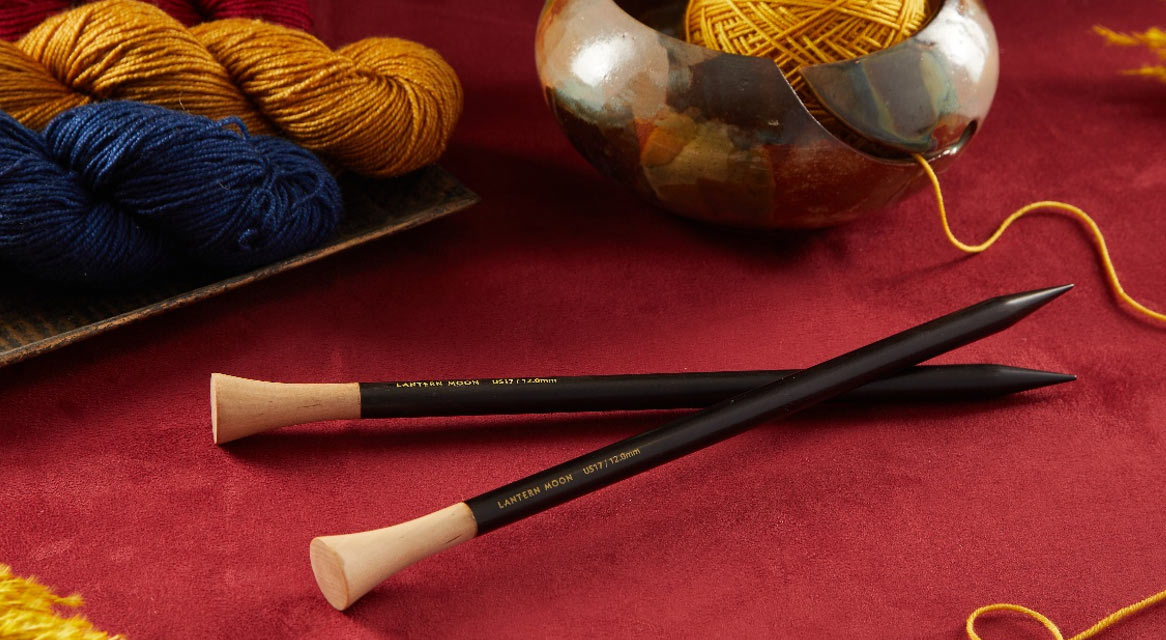
The first step in any knitting project is to cast on stitches. You will find plenty of cast-on methods and choosing the right one lays the foundation of your project. We'll go over some of the most often used cast-on methods, their uses, and the kinds of items you can create with knitting needles in this blog post. Learning these techniques will improve your knitting skills.
Explore Popular Cast on Methods in Knitting
Check out some popular cast-on techniques and see how you can use them in your knitting projects:
1. Single Cast On
The single cast-on technique is one of the simple, and quick ways of adding stitches by wrapping the yarn around the thumb. It is also known as a thumb cast on or backward loop and is good for beginners. The single cast-on method does not need any extra thing except a single strand of yarn and one of the circular or double-pointed knitting needles. To create this cast-on, first, make a loop with the yarn and transfer it to your knitting needle that looks like a backward loop. This method is perfect for those who do not require stretchy or tight edges. For beginners, it does not require much intricate fingerwork.
Best Use - Hence it is the best method for learning the basics of knitting. Useful for lightweight projects that do not need high durability like scarves or shawls.
2. Twisted Chain Cast On
The twisted chain cast-on is used to create medium-stretch, lovely braided edge, and is easy to knit. This technique is used where a neat and attractive border is required, such as hems of mittens, sweaters, and cowls. It is formally known as the Chinese Waitress cast-on. Master the twisted chain cast-on with our blog.
Best Use - The method is perfect for lace shawls, sweaters, and scarves. For creating decorative edges use twisted chain cast-on in cowls and shawls. Mittens and socks that require a stretchy and firm edge.
3. Twisted German Cast On
This technique is an improved form of the long-tail cast-on and is also referred to as the Old Norwegian cast-on. Because of its increased elasticity, it's ideal for tasks that need greater stretch and ribbed edges. It seems a bit complex but with practice, you will easily create it. The German twisted cast-on produces reversible edges that do not curl. Learn how to make a twisted German cast-on through our blog.
Best use - The technique is used where stretchy and invisible edges are essential such as lace shawls, scarf, and sweaters. For a comfortable neckline or cuff and a professional finish, this is the perfect method.
4. Two Needle Cast On
The two-needle cast-on is created using two needles for casting stitches on the needles. This method is perfect if you require much stretchier edges like lace or a 2x2 rib stitch. As a result, you get a neat and sturdy edge, easy to knit across the first rows. Refer to our blog to dive into details on how to cast on knitting with two needles.
5. The Longtail Cast On
Among the most common and adaptable techniques is the long-tail cast-on. It produces a clean, flexible edge that works well for many projects. Read our blog to dive into details and learn the long tail method to cast on stitches. To make the cast-on stitches, the method entails determining the length of yarn (the "long tail"). This technique provides a clean, elastic edge, ideal for projects requiring flexibility. When you use a long-tail cast-on, you have to calculate the appropriate length of yarn to accommodate the stitches. Refer to our blog for 5 methods to calculate the yarn needed for long-tail cast-on.
Best uses - The method is suitable for socks, hats, and cuffs that require a stretchy edge.
6. German Twisted Purl Cast On
This versatile German twisted purl cast-on method, uses the purl stitches for ribbing and other stretchable designs. This flexible cast-on helps the knitters to add strength and elasticity at the start of the project, and also refer as old Norwegian cast-on. You can use this method in ribbed edges like socks, or hats. To dive into details refer to our blog on how to do the German twisted purl cast-on.
7. Cable Cast On
The Cable Cast-On produces a cable-like edge that is hard and even. It works well for edges that require stability because it is less elastic than other techniques such as in scarves, cowls, sweaters, blankets, and more. Learn how to knit a cable cast on.
8. Provisional Cast On

This unique knitting technique keeps your stitches alive (knitting later). The method is used for multiple purposes in knitting. A temporary technique that lets you unravel the stitches and work with them later. It is a combination of a knitting needle and a crochet hook. This is useful for the folded trims, hem, or when working without measurement or design. Learn this versatile technique of how to knit or crochet a provisional cast-on.
We hope you understand these simple and versatile cast-on techniques. Every method has its own advantages, ranging from the flexible long-tail to the cable and the elastic German twisted cast-on. You can increase your knitting confidence and create a variety of projects by using the premium knitting needles from Lantern Moon, made from ebony wood.
